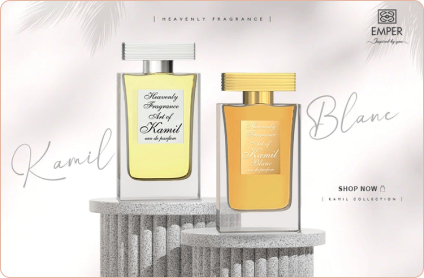Perfume has long been considered a delicate form of art, with each fragrance capturing unique emotions and memories. Just like any artistic creation, perfume is composed of various elements, and understanding its complexity is essential. The world of perfume can be overwhelming at first, but breaking down fragrances into families can help you appreciate their distinct qualities.
What Are Fragrance Families?
A fragrance family is a group of perfumes that share similar characteristics. These categories help both perfume enthusiasts and perfumers classify scents based on their ingredients, structure, and overall aroma. The main fragrance families are:
- Floral: The most popular fragrance family, floral perfumes are inspired by the beauty and delicacy of flowers. Common notes include rose, jasmine, lily, and violet. Floral perfumes evoke feelings of romance, femininity, and elegance.
- Oriental: Oriental perfumes are rich, warm, and spicy, often associated with luxury. They are characterized by deep, exotic notes like amber, vanilla, and musk. These fragrances often have an intoxicating, mysterious allure, perfect for evening wear.
- Woody: Woody fragrances are grounded and earthy, often featuring notes like sandalwood, cedarwood, and vetiver. These perfumes tend to have a more masculine or unisex appeal, conveying a sense of stability and strength.
- Fresh: Fresh perfumes are light, clean, and energizing. They often feature citrus, green, and aquatic notes, making them perfect for daytime wear. These fragrances are refreshing and evoke a sense of freedom and vitality.
- Fruity: Fruity fragrances combine the sweetness of fruits with the complexity of other ingredients. Notes such as apple, peach, and berries are common in fruity perfumes, offering a playful and youthful vibe.
-
Chypre: Chypre fragrances are complex and balanced, typically featuring citrus, floral, and woody notes. These perfumes are known for their sophistication and timeless elegance, making them a classic choice for many perfume lovers.
How Fragrance Families Influence the Creation of Perfume
When creating a perfume, the perfumer selects raw materials from various fragrance families to build a composition. The goal is to strike a balance between top, middle, and base notes, each of which evolves over time as the fragrance interacts with your skin. Top notes are what you smell immediately upon application, middle notes emerge after the initial impression fades, and base notes are the lasting foundation of the fragrance.
By understanding fragrance families, consumers can better navigate the complex world of perfume and select scents that align with their personal tastes. Whether you gravitate towards the romantic allure of floral perfumes or the mysterious warmth of oriental scents, knowing the families helps you make an informed choice.
Conclusion
Perfume is not just a scent; it is an experience. Each fragrance family tells a different story and evokes a range of emotions, making it an integral part of personal expression. Understanding fragrance families is the first step in discovering your signature scent and fully appreciating the artistry of perfume.




